My Dendy from the 1990sSeptember, 2016This Summer, Nintendo has announced the NES Classic Edition, also known as the Nintendo Classic Mini: Nintendo Entertainment System. This console will have 30 built-in games and a classic NES controller. Release is planned for November 11, 2016. Since the release is less than 2 months away, I have decided to revisit my own childhood. Even though I'm residing in the Czech Republic at the moment, my 8-bit memories go way back to Russia, where I was born. And as you might be aware, during the 1990s Nintendo did not sell the NES in Russia officially. Thus the market was open to the influx of various Famiclones. The most famous Famiclone to be sold in Russia at that time was the Dendy, back then being sold by a company named Steepler. Even though Steepler's production was not official, not endorsed by Nintendo in any way, Steepler was able to market their devices on a national scale. Just take a look at this short commercial being shown on TV during the 1990s: |
|
Even though Dendy consoles are still being produced and sold to this very day (by a different company, since Steepler went out of business a long time ago), the quality of these consoles is rather questionable. Luckily, when I moved to Prague from Russia in the 1990s, our family also took with us the Dendy console I owned. Steepler produced several different models of their Famiclone: Dendy Classic, Dendy Junior, etc. An overview of these consoles with photos can be seen here. The clone that I own until this very day is the Dendy Junior IIThis Famiclone by Steepler resembles the original Nintendo Famicom the most out of all the other Steepler models. Consoles of the Dendy Classic series do not resemble the Famicom at all, while Steepler's other consoles in the Junior series have controllers, that can be disconnected from the console, thus being not true to the original Famicom. Unfortunately, after all these years, I have lost the original box / packaging, the instruction manual, the original power source adapter and maybe also a few of the cartridges I used to own. Thankfully the console itself, to my surprise, still works to this very day, even if the first controller is not as responsive as it used to be. This only proves that original Steepler Famiclones produced in the 1990s were high quality compared to cheaper Chinese Famiclones being sold back then and also to this very day. Anyway, it's time to take a look at the console itself. Images can be clicked to view in greater resolution. At first glance, the console's shape is very reminiscent of the original Japanese Famicom. The biggest differences are the colors of the console and the controllers (gray instead of red in the Famicom), the labels, the added turbo buttons on the controllers, also the differently shaped D-pads. |
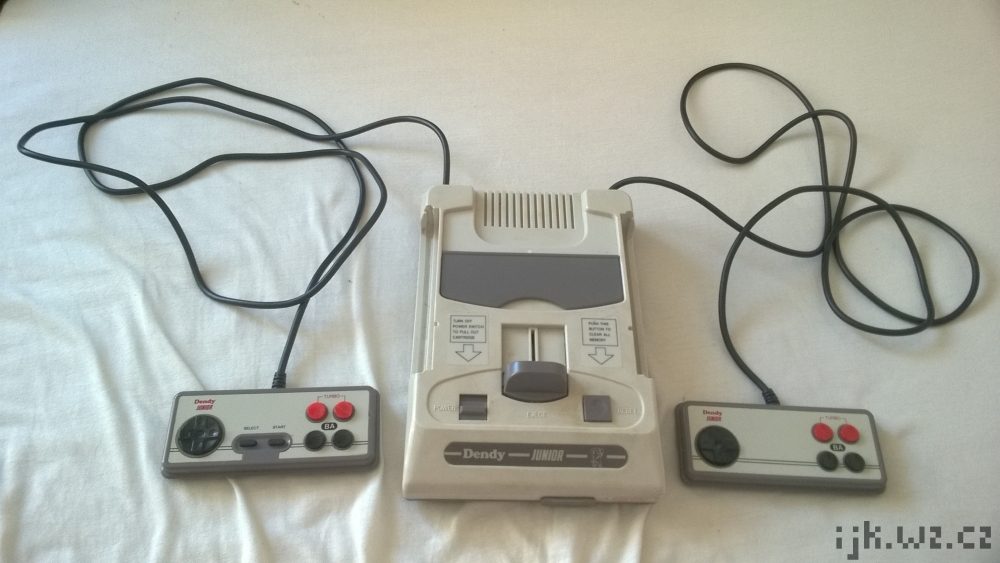
|
|
The label on the original Famicom near the front connector is obviously in Japanese. Here we have English text instead. |
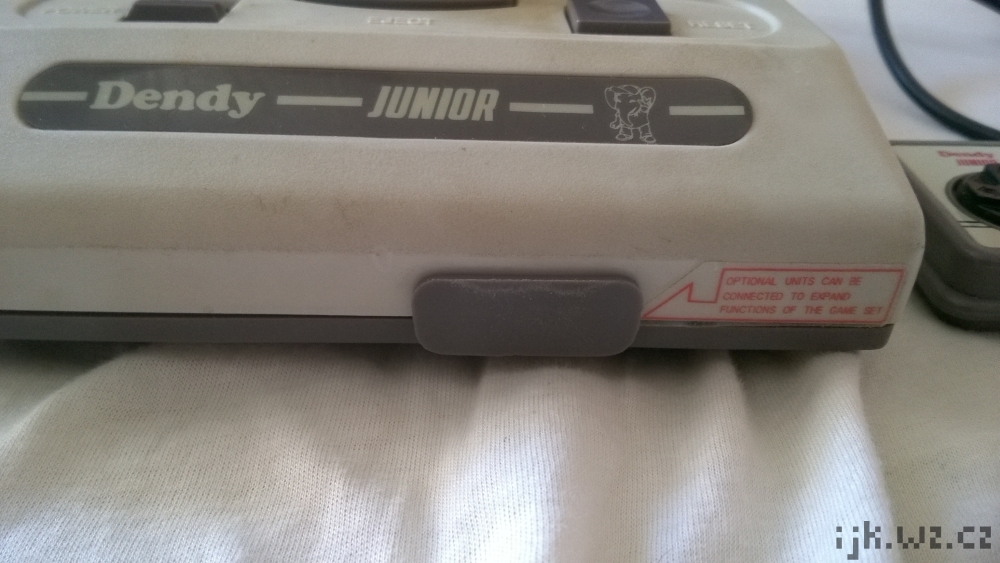
|
Here's the detail of the power and reset buttons. Similar to the Famicom. |
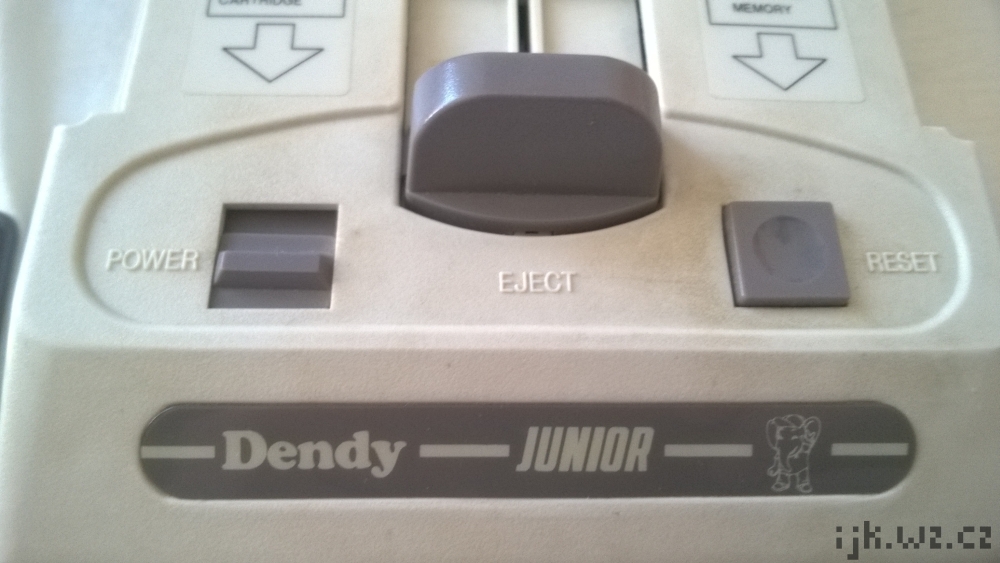
|
The labels explaining the function of the power and reset buttons are in English. Original Famicom has them in Japanese. |
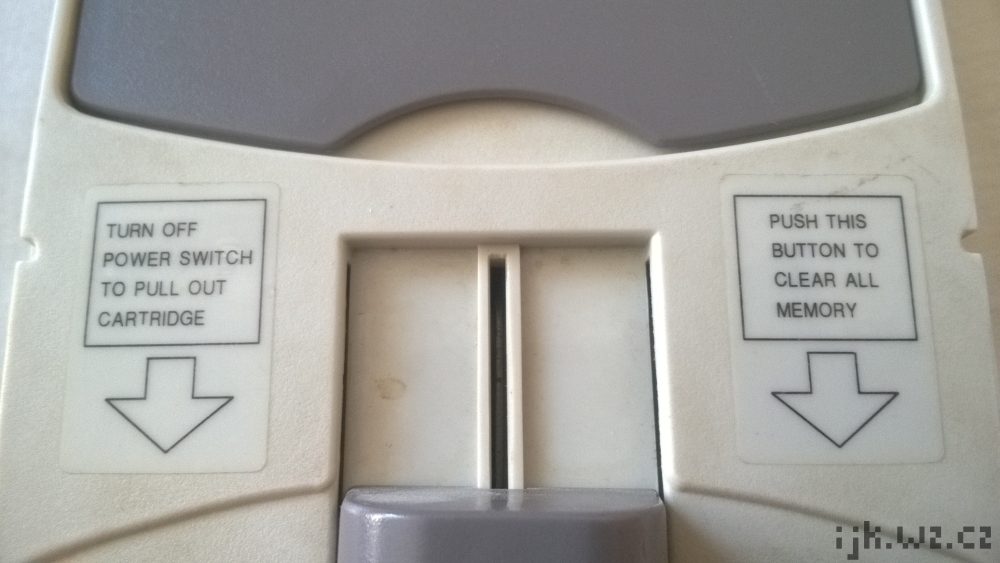
|
From what I know, this Dendy should be compatible with official cartridges made for the Famicom. Unfortunately I don't have any to test it. |
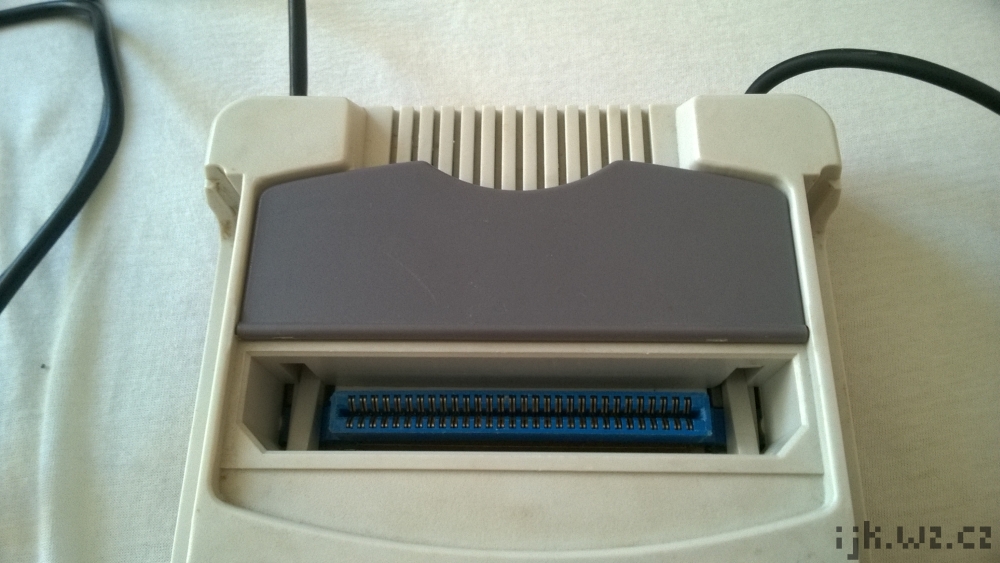
|
When the power is turned on, it is indicated by a red stripe. |

|
Now is the time to take a look at the controllers. The second one doesn't have the Start or Select buttons. It also doesn't have a microphone or volume control like the second Famicom controller. However turbo buttons are present on both of the Dendy controllers. |
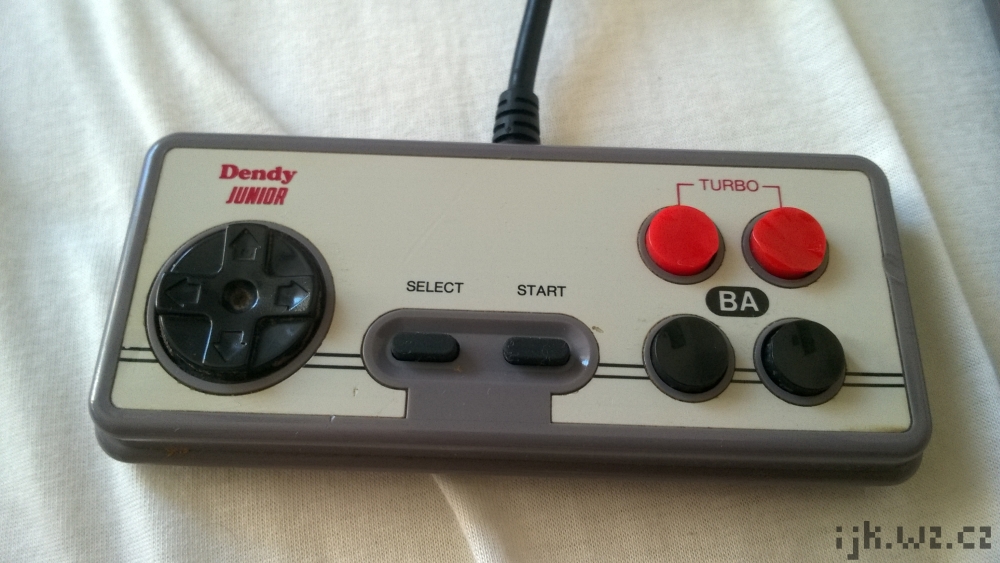
|
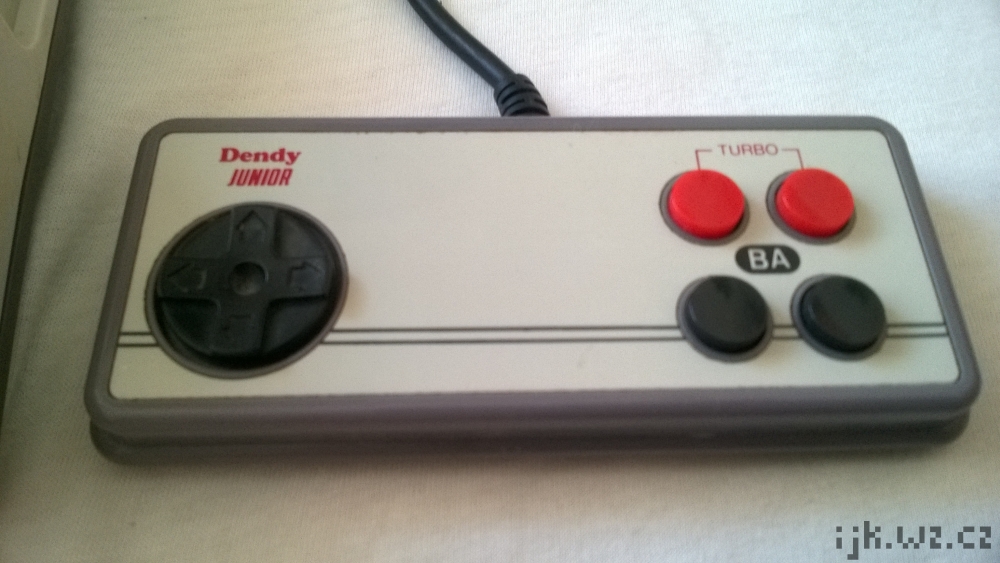
|
The bottom of the console is similar to the Famicom, however rubber "legs" are missing. One of the labels informs about the power consumption. |
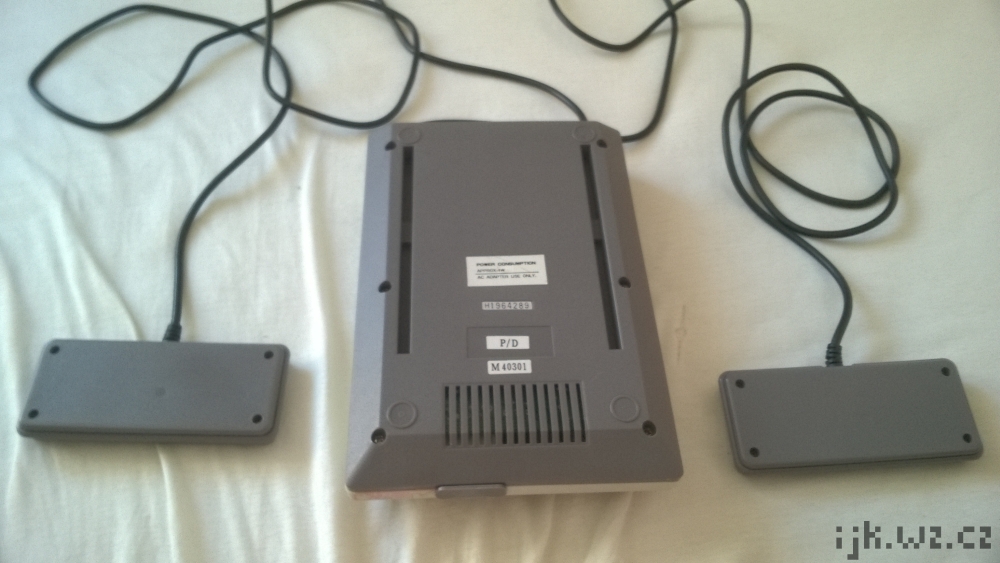
|
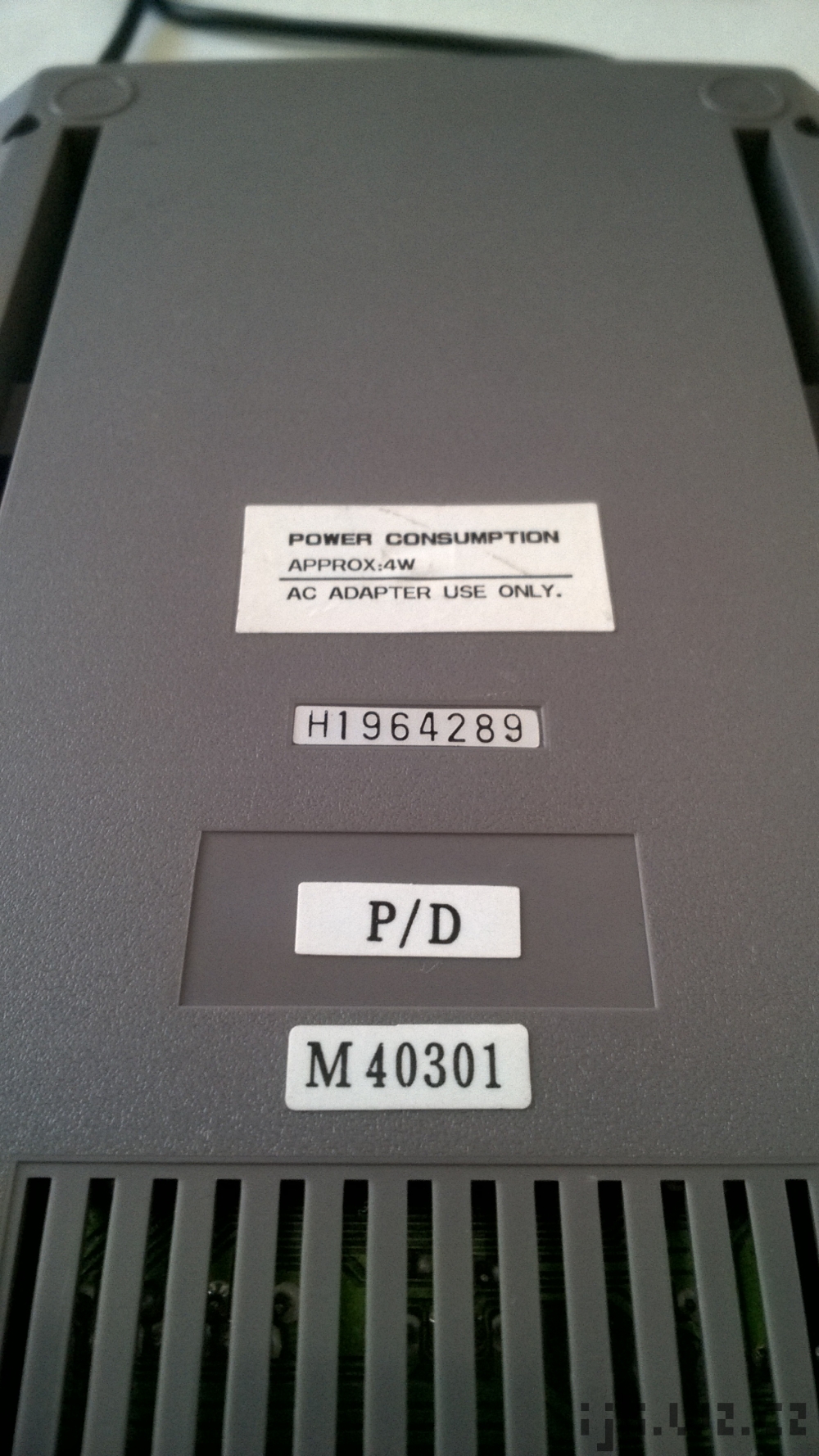
|
Back of the console has a possibility to connect the console via RCA connectors (also known as Cinch). Everything else is very similar to the Famicom. |
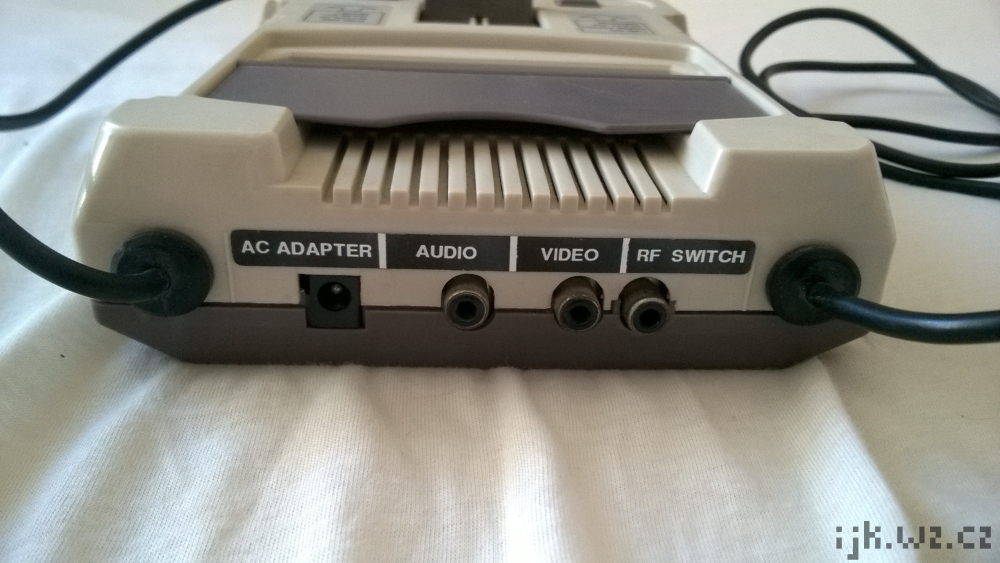
|
Let us disassemble both of the controllers and then look at the plastic and rubber parts, together with the printed circuit boards. The shocking part is that the second controller's printed circuit board has the select and start buttons, since both PCBs are identical. Kinaman mentioned this in one of his videos. |
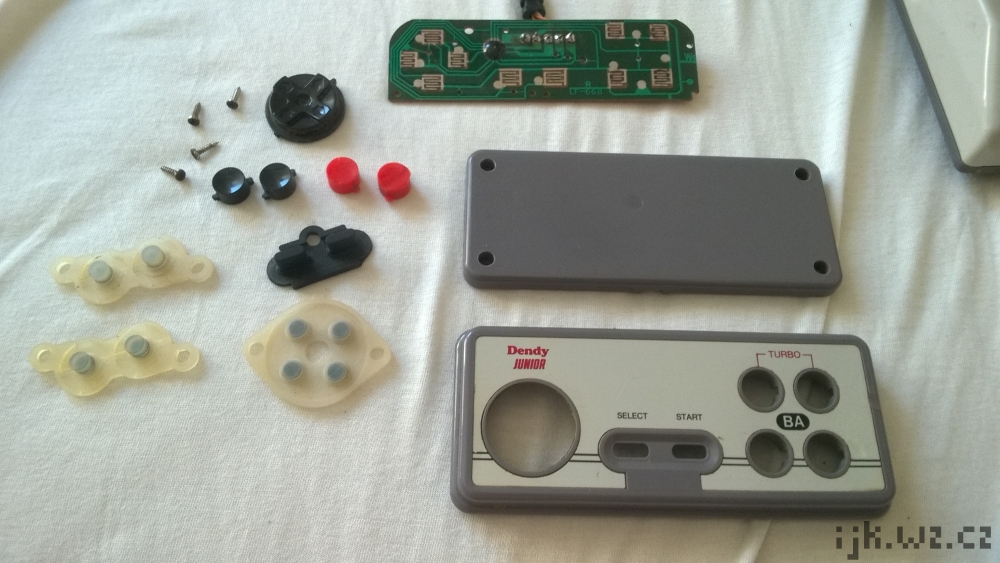
|
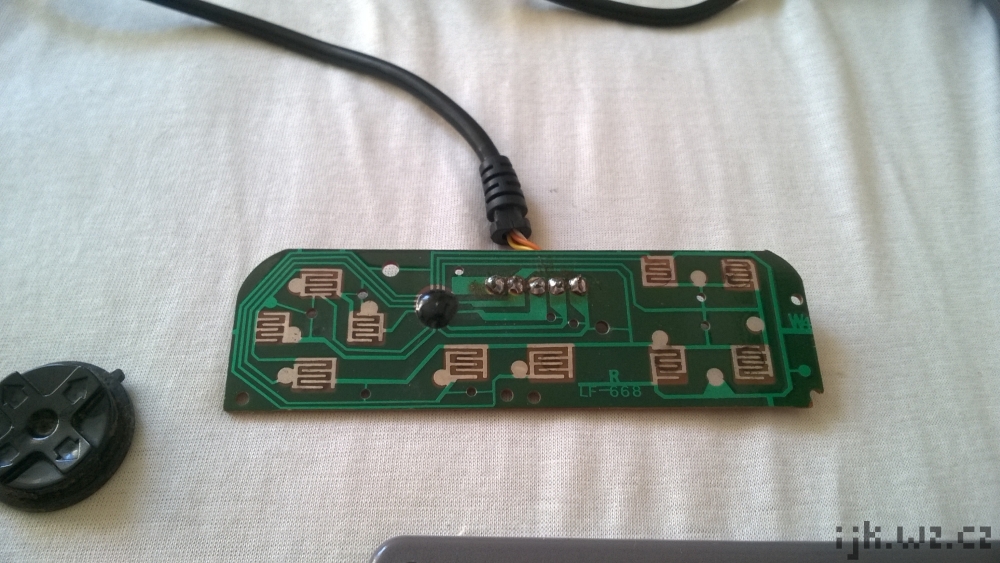
|
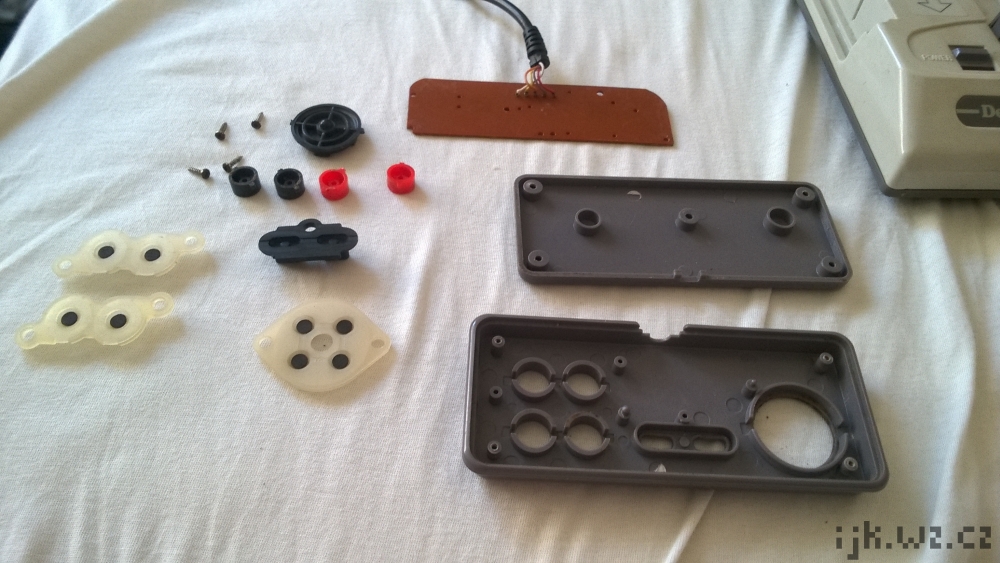
|
The second controller follows. |
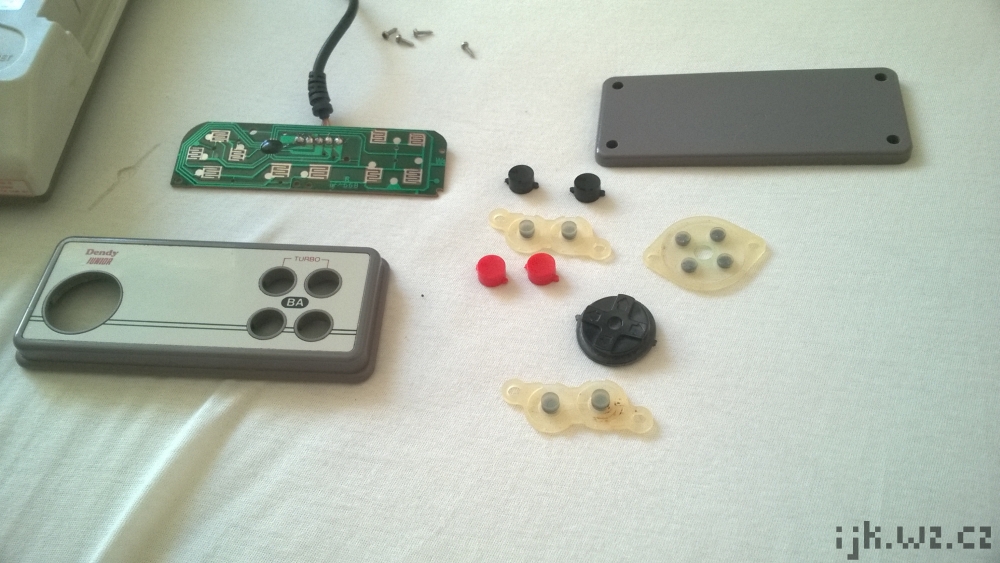
|
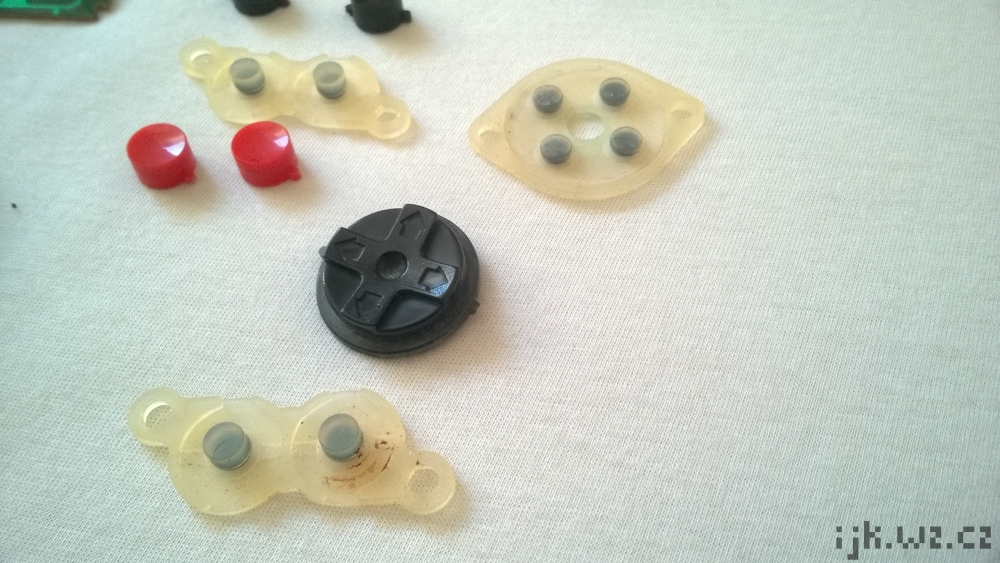
|
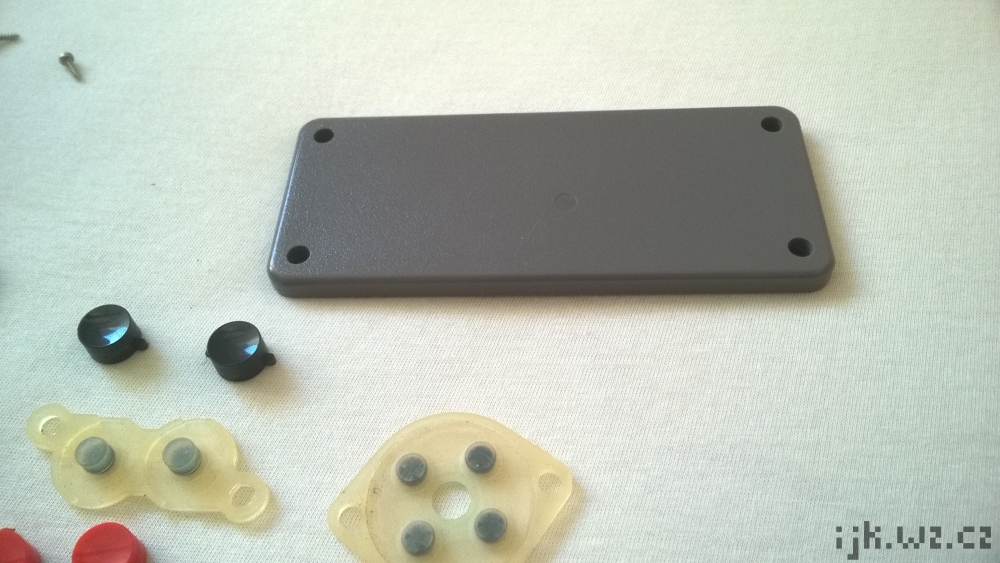
|
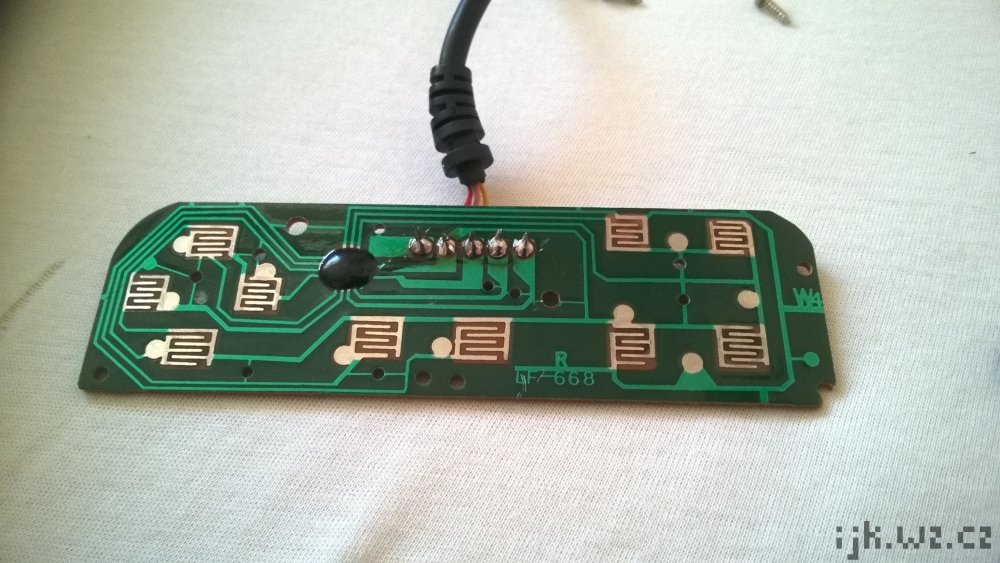
|
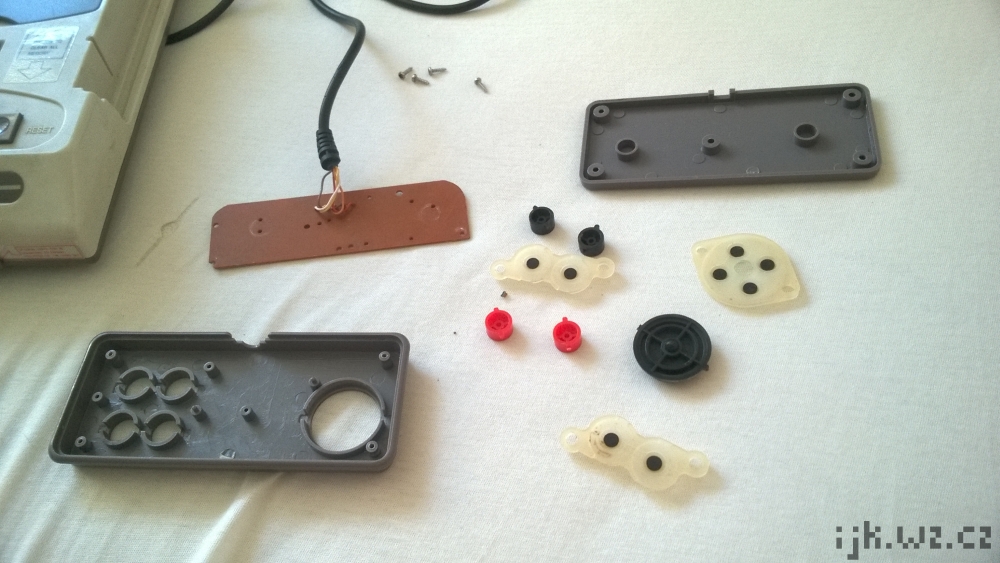
|
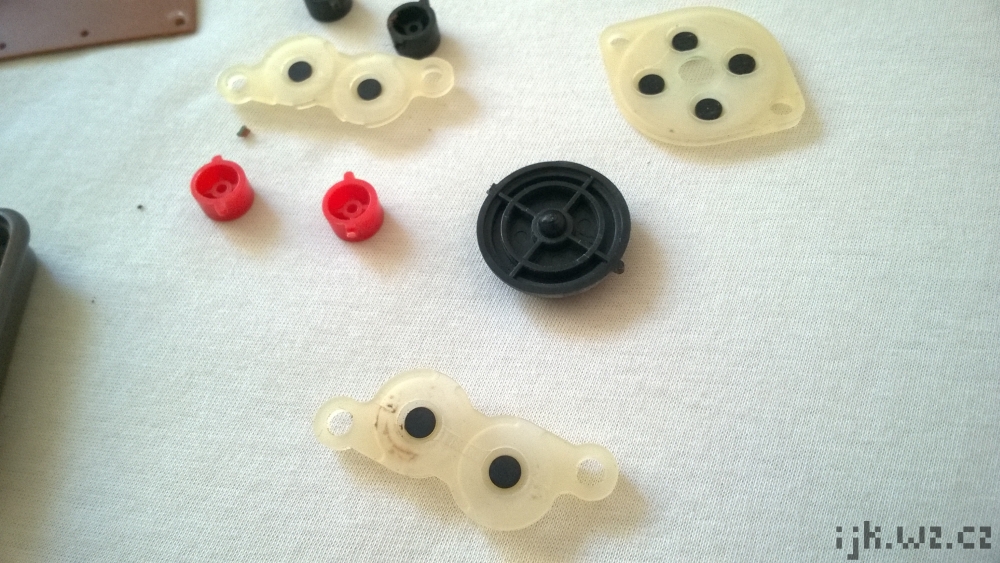
|
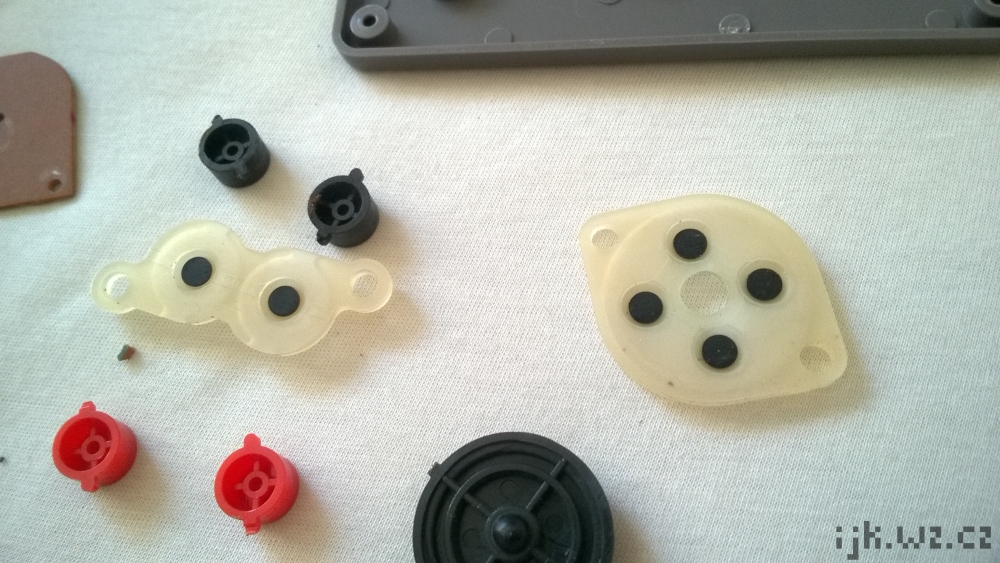
|
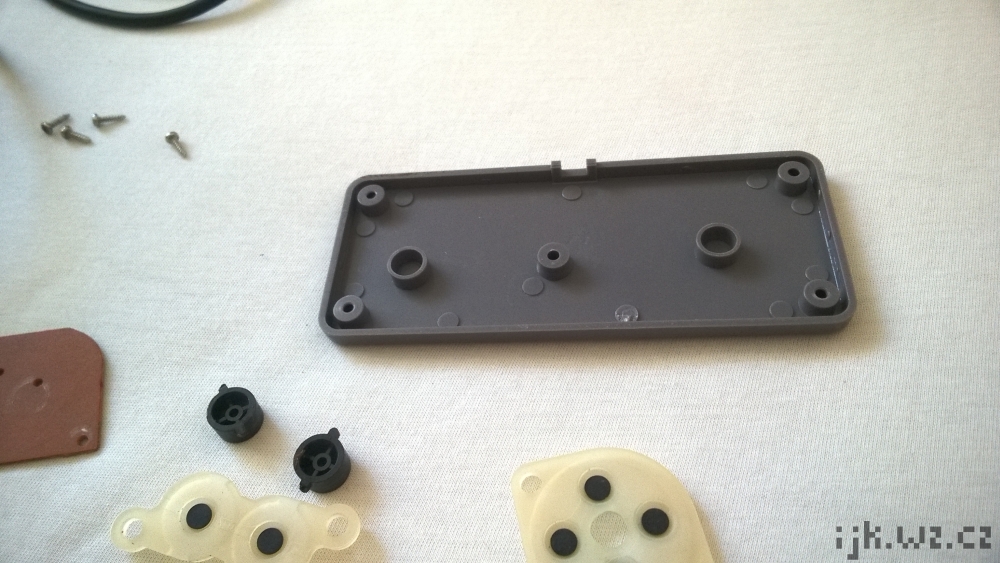
|
The front connector has 15 pins. |
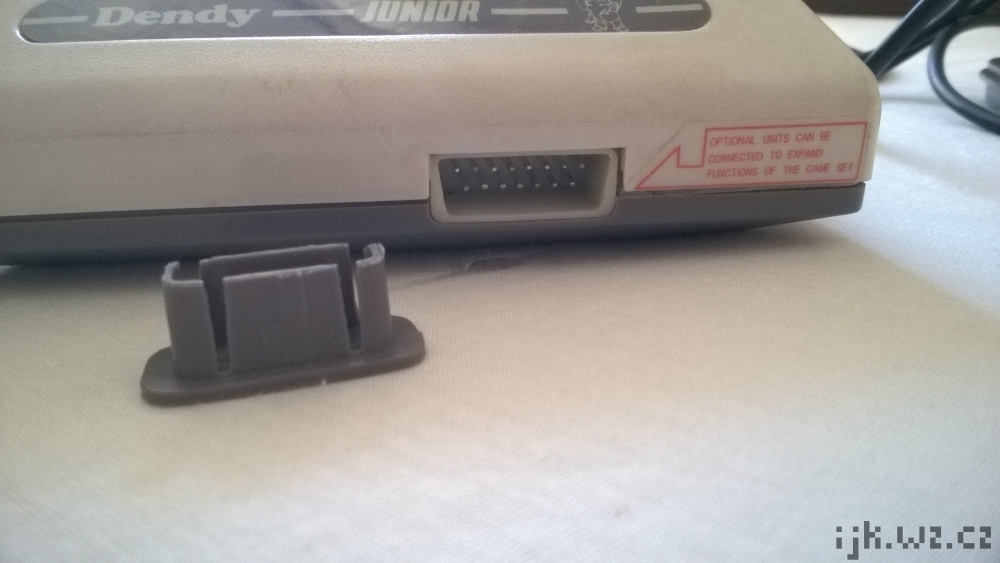
|
Let's take apart the console itself and look at the PCB. The processor is UM 6561T. Also of note is the voltage regulator HSMC 7805. |
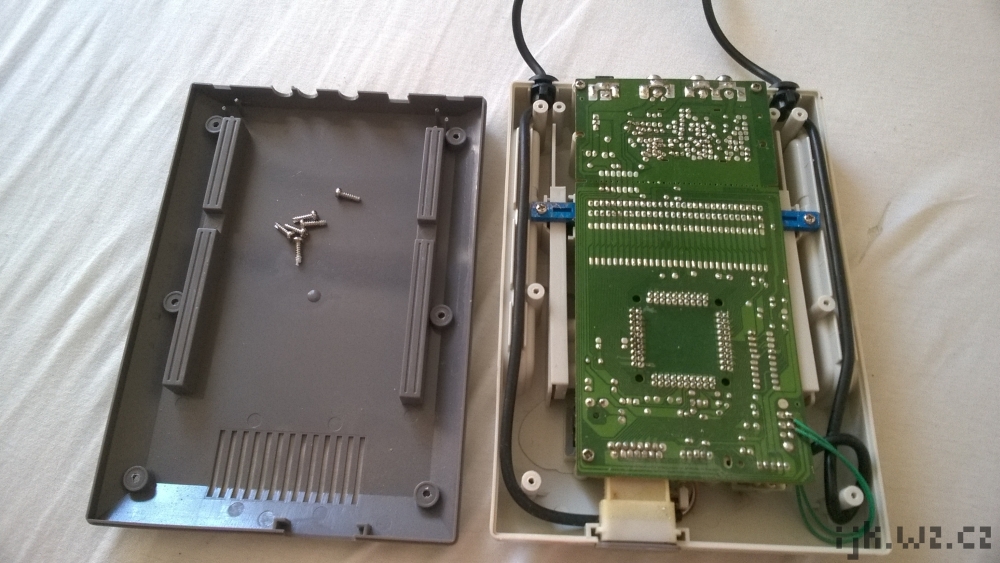
|
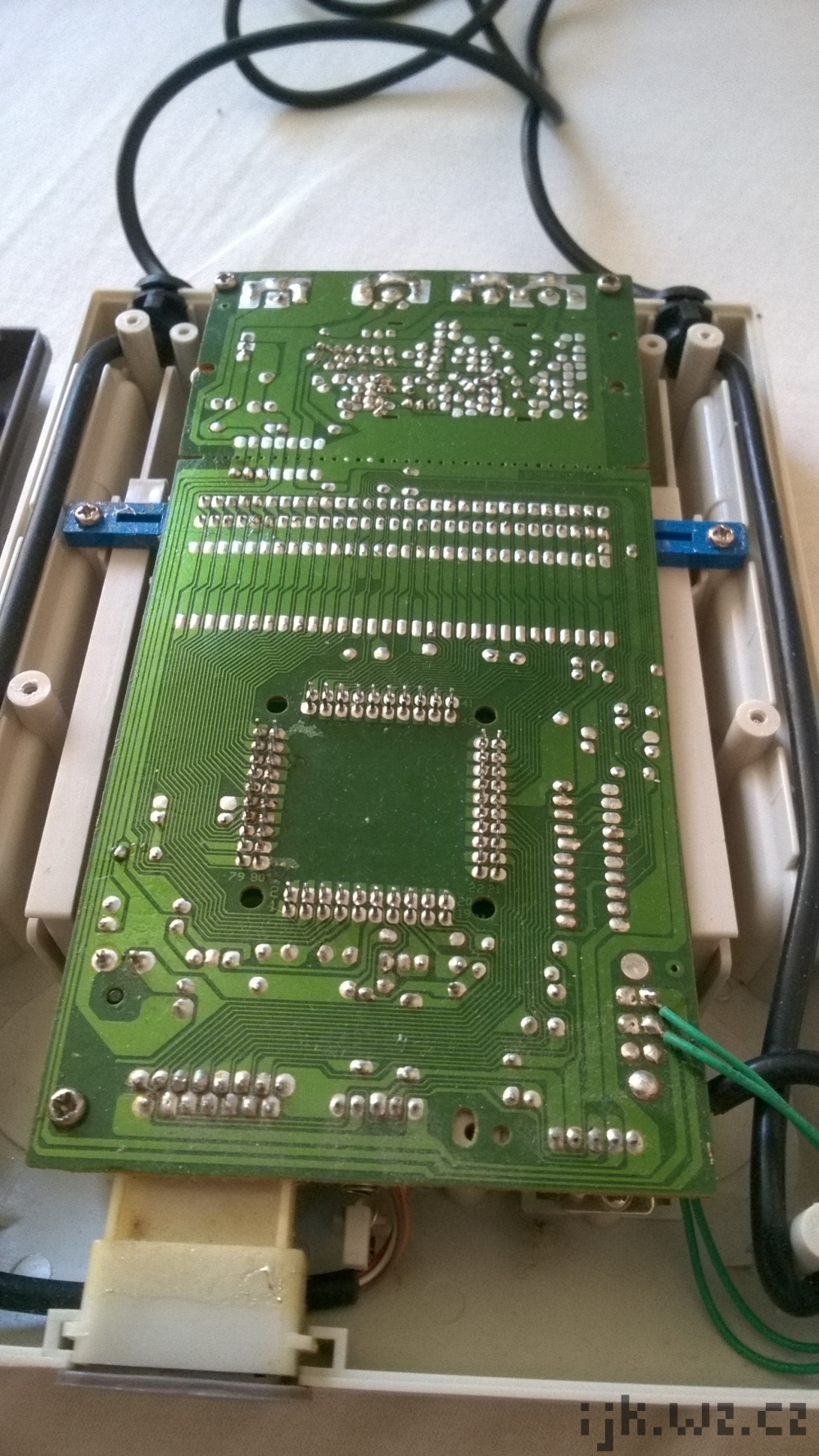
|
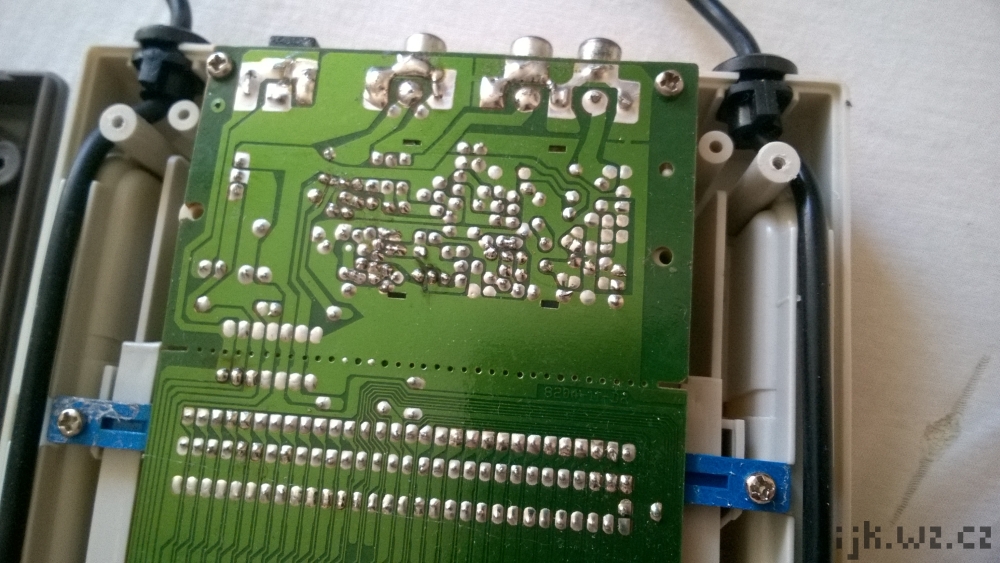
|
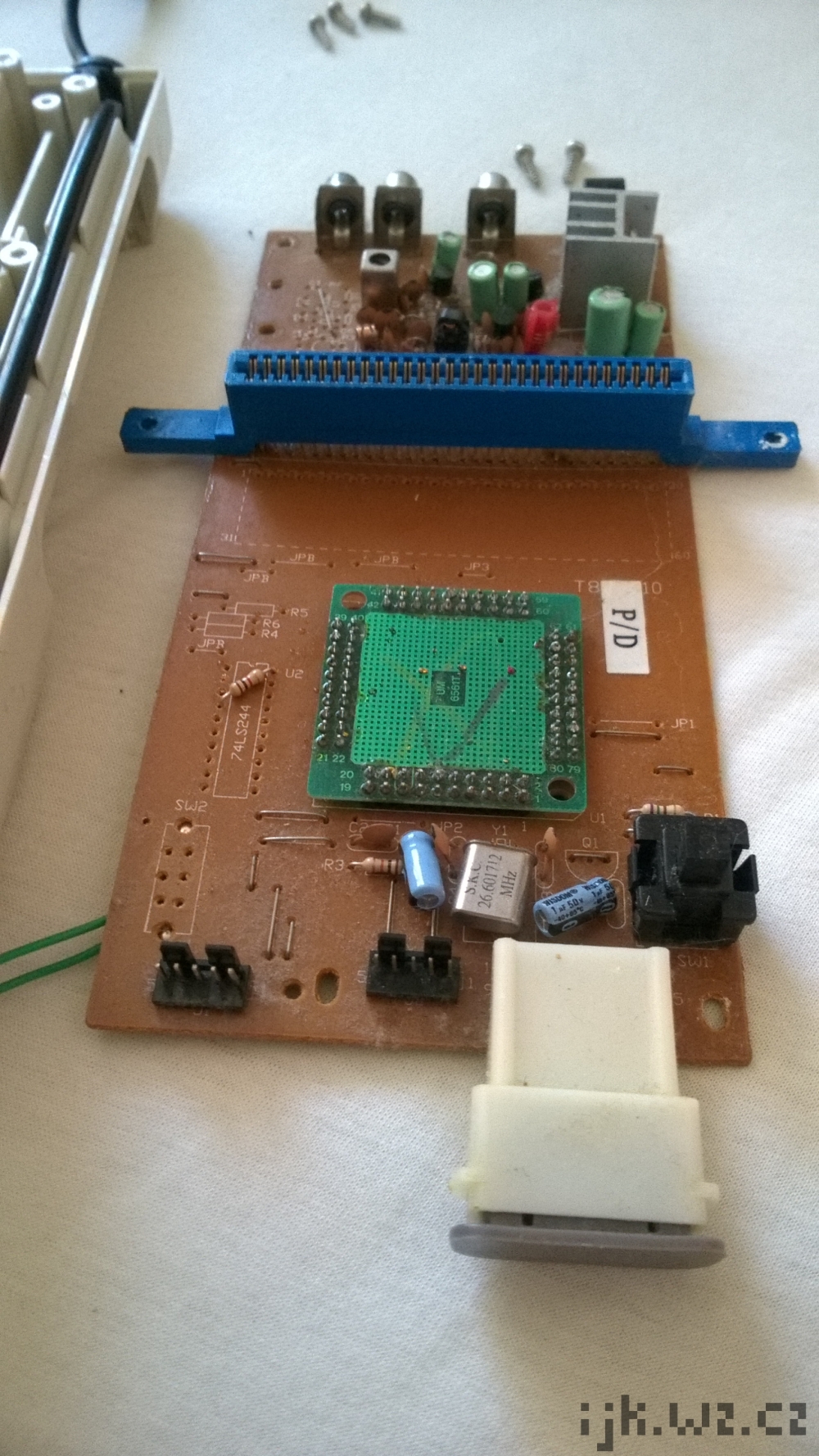
|
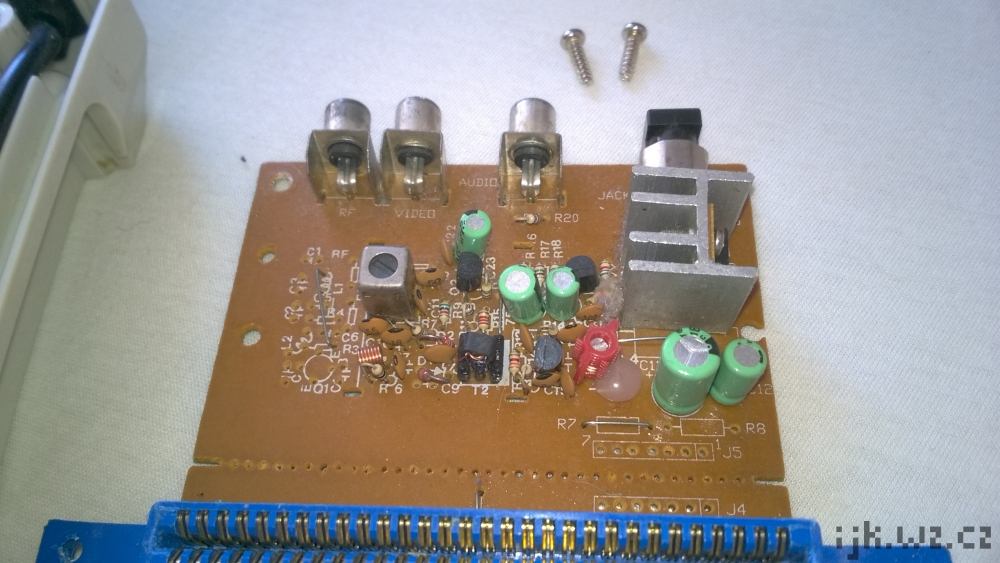
|
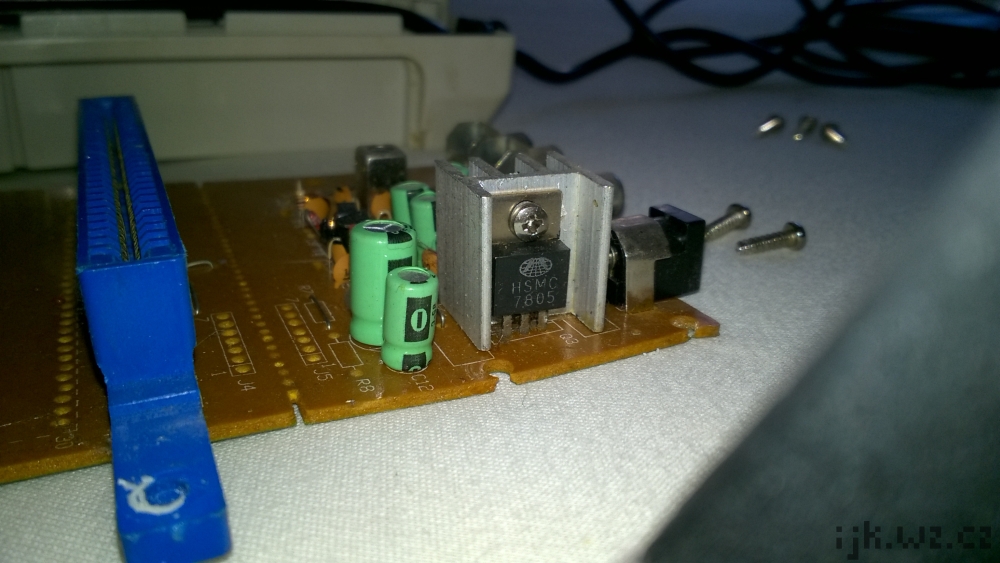
|

|
Here we can see that the controllers, although hardwired on the outside, like on the original Famicom, can still be disconnected from the console's PCB. Thus no soldering is required when a controller breaks, only the disassembly of the console. Also of note is that the mechanism to remove cartridges has metal parts, thus making the mechanism more durable and better quality than in other cheap Chinese Famiclones. |
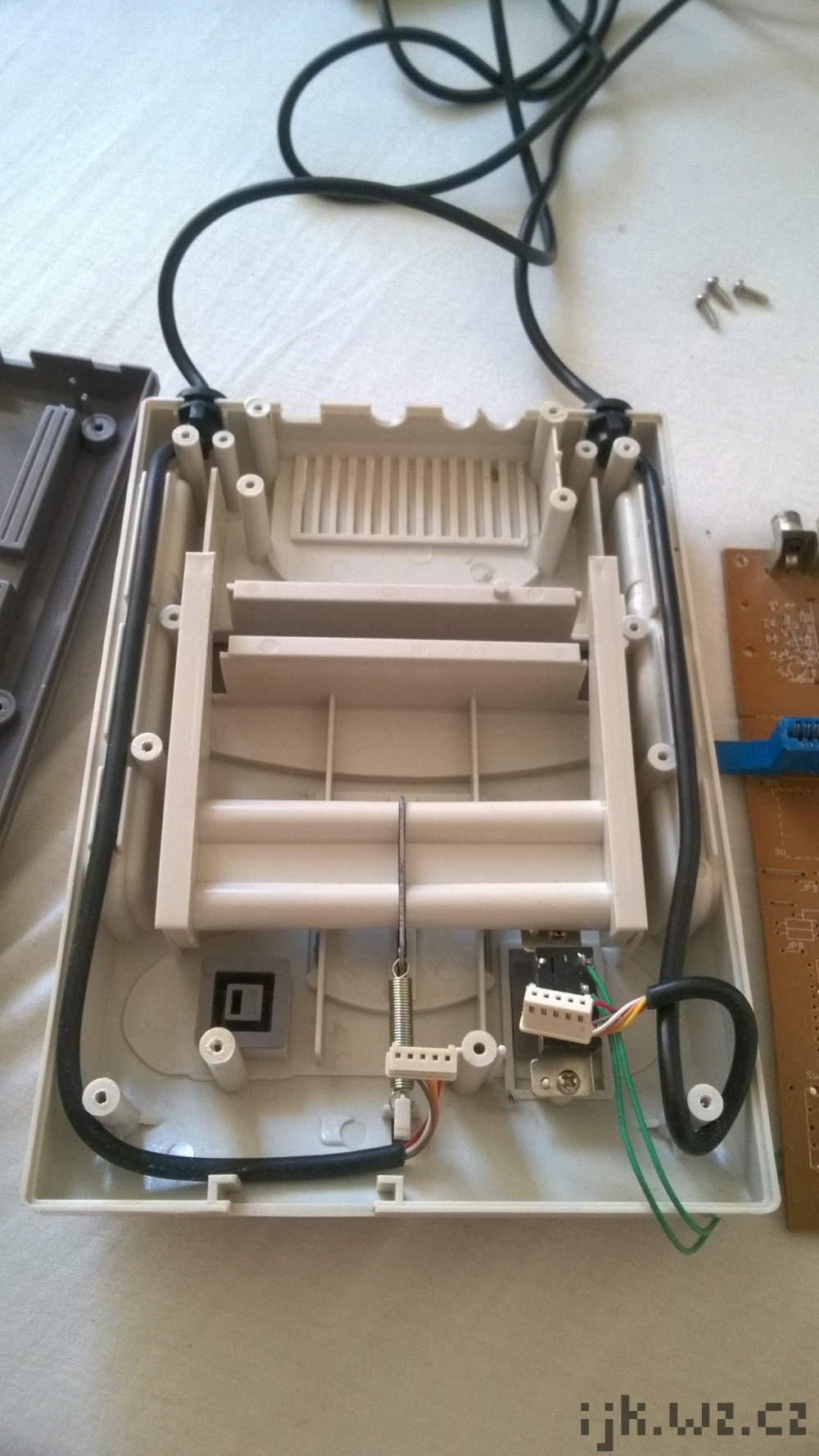
|
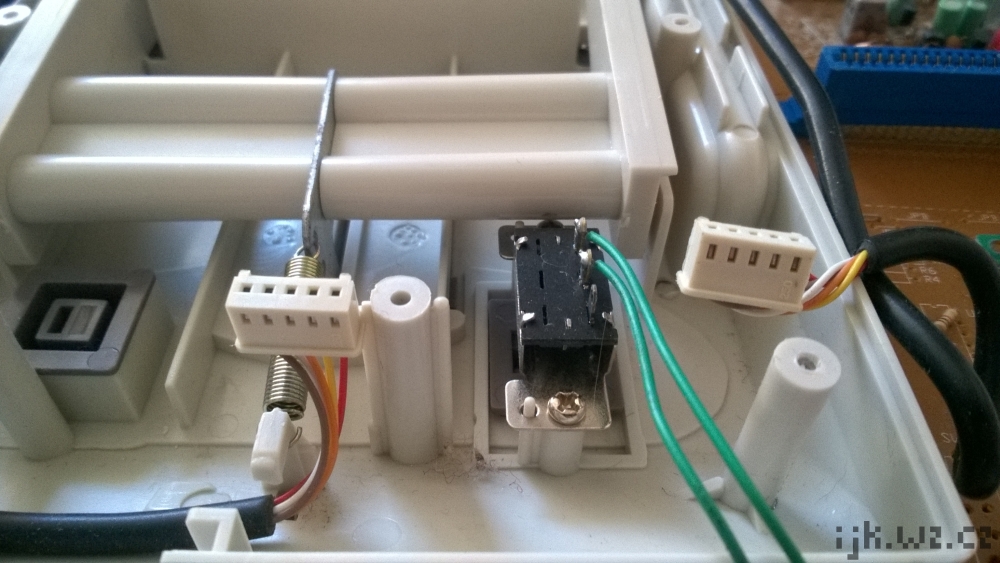
|
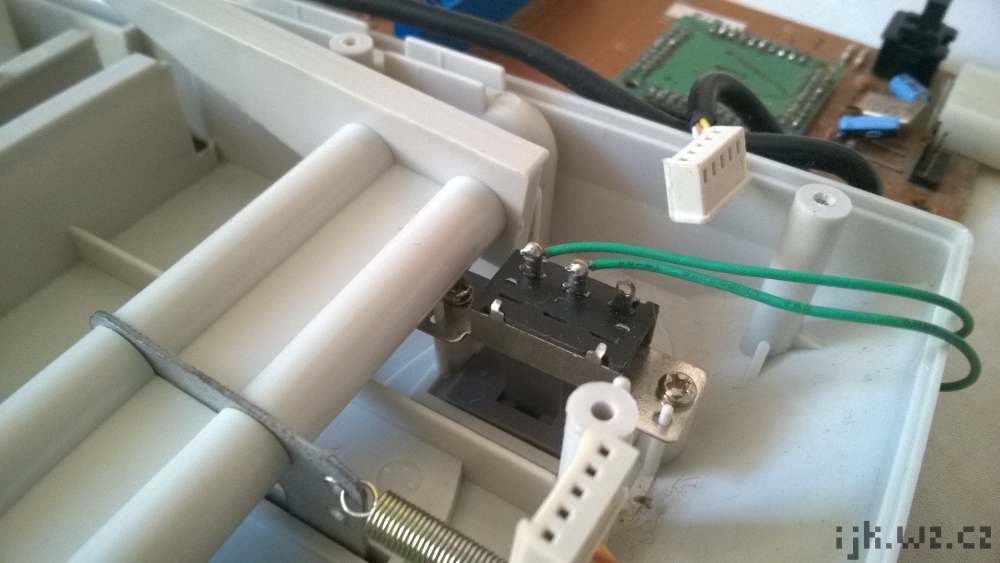
|

|
The Zapper (or light gun) made for the Dendy is a submachine gun that can be disassembled into a pistol. This gun also has a built-in speaker, thus, when connected to the front connector of the Dendy, all of the sound in games comes out of it, instead of the TV's speakers. |
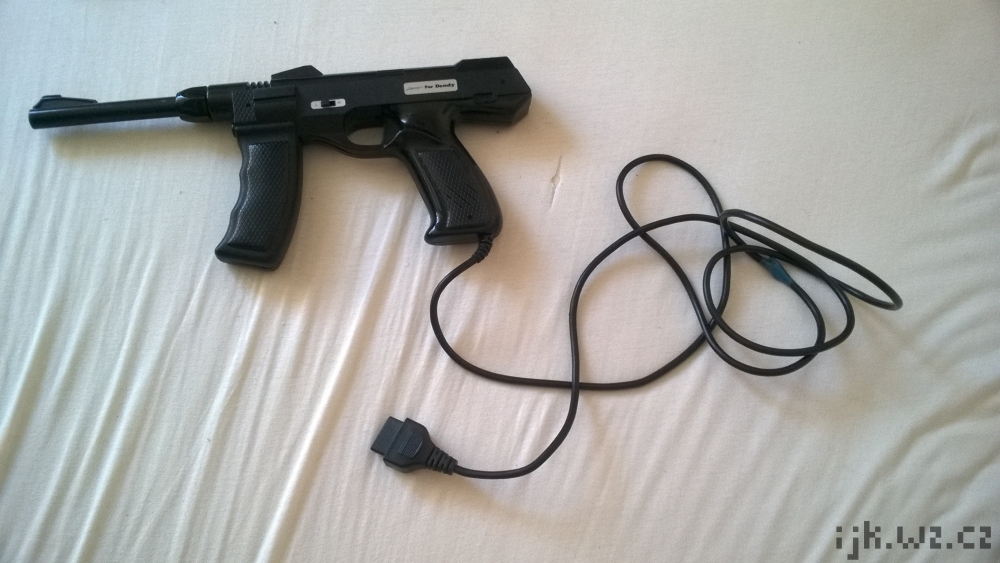
|
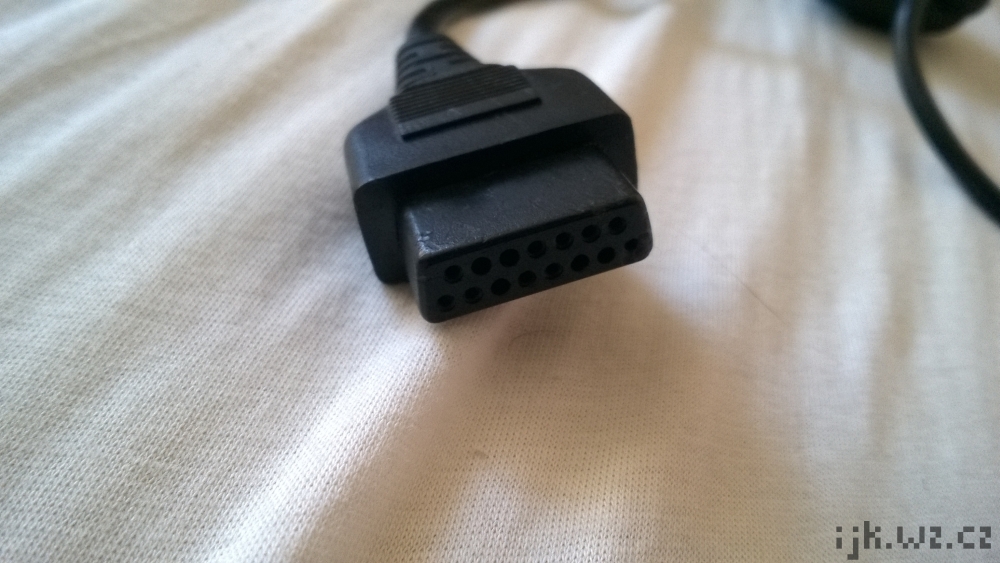
|
Here you can see the speaker on the light gun. |
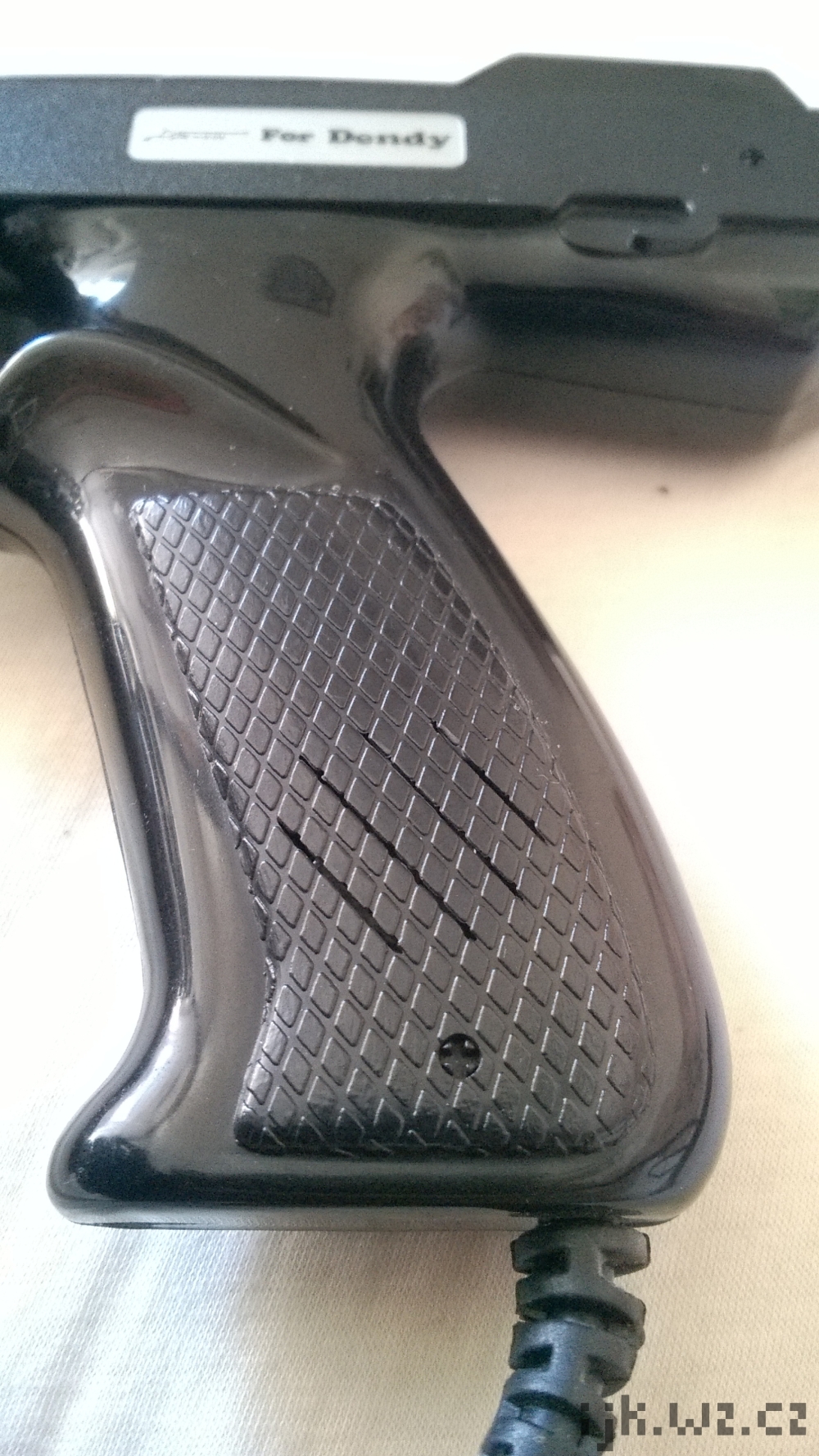
|
Some other photos of the light gun follow. |
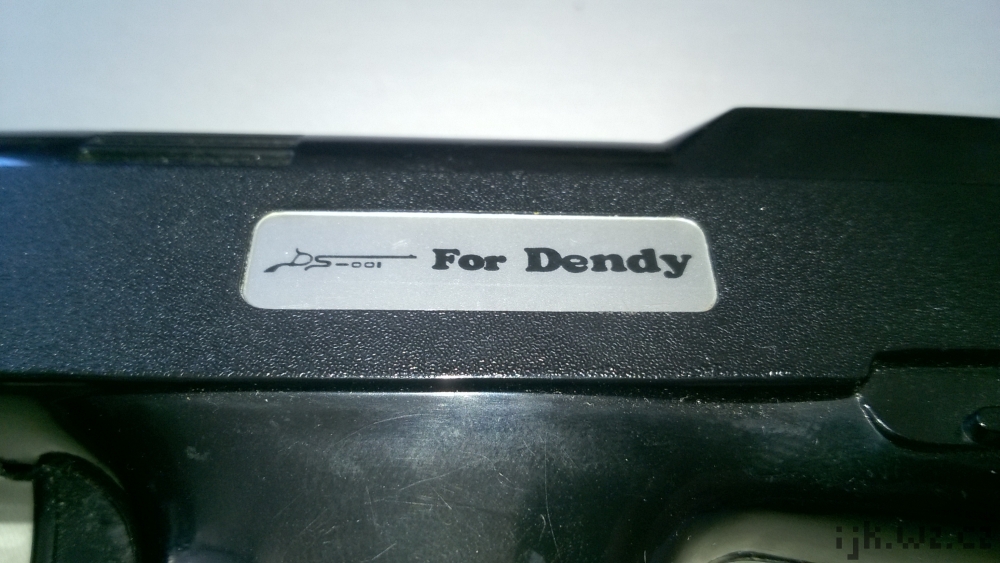
|
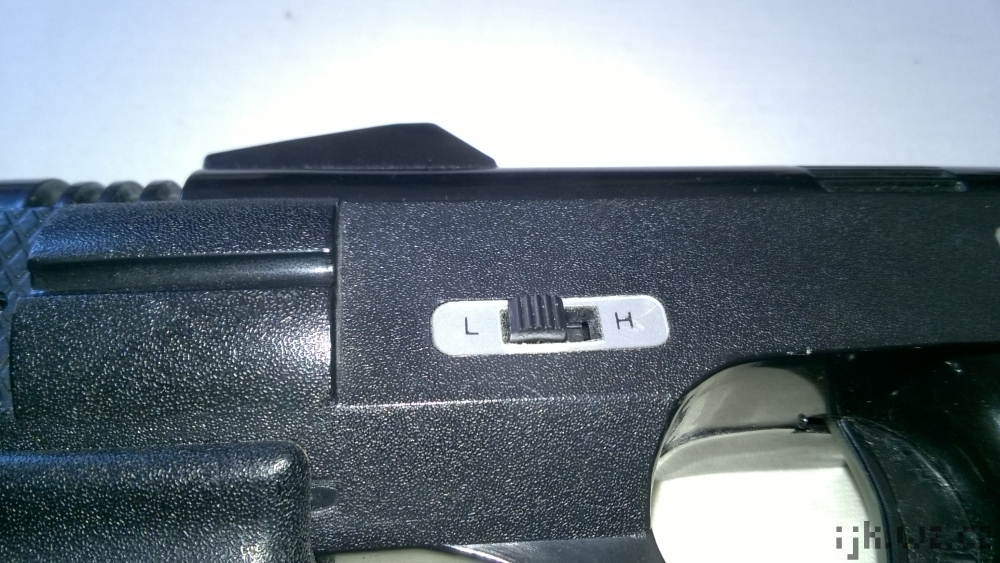
|
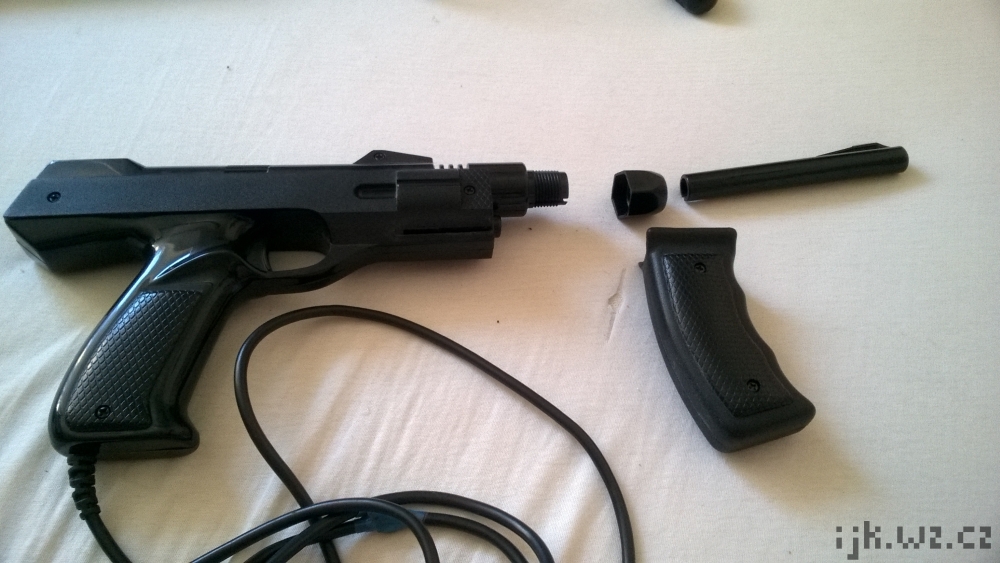
|
A box like this was supplied with the Dendy. It simplified the process of switching the antenna signal from TV antenna to the console and back. The box is not needed when using connection via RCA connectors. The label on the back can be removed and the box attached to something (there is glue underneath the label). |
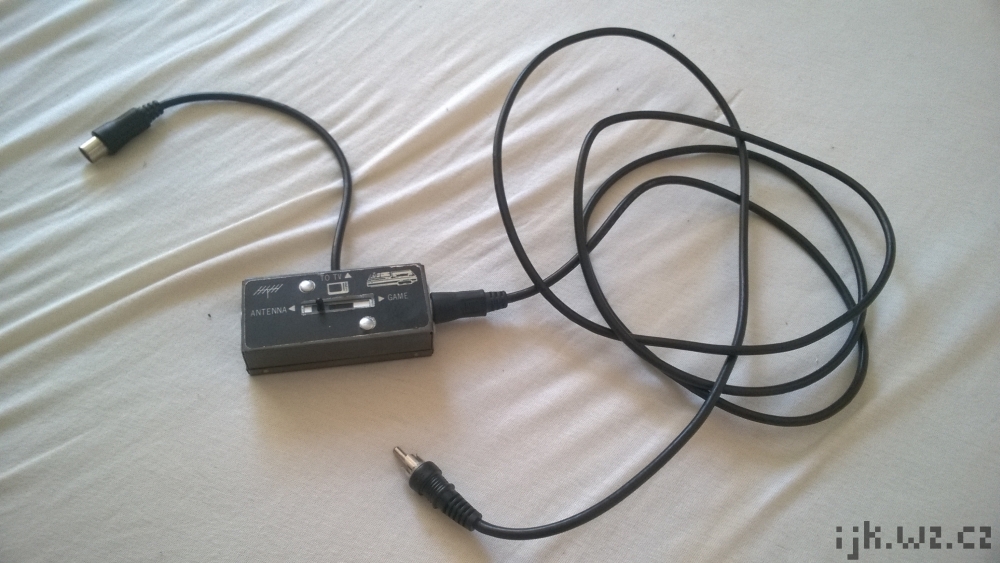
|
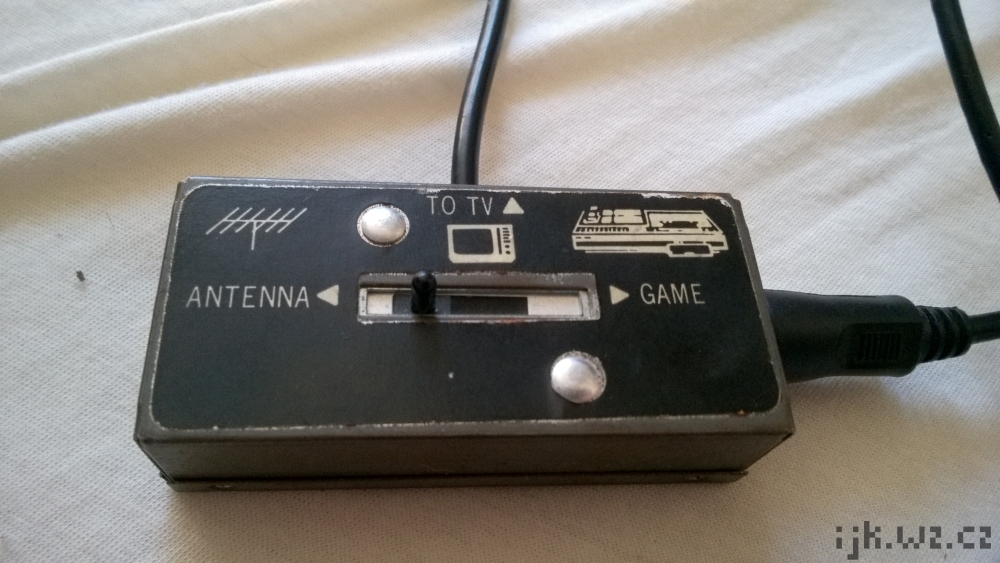
|
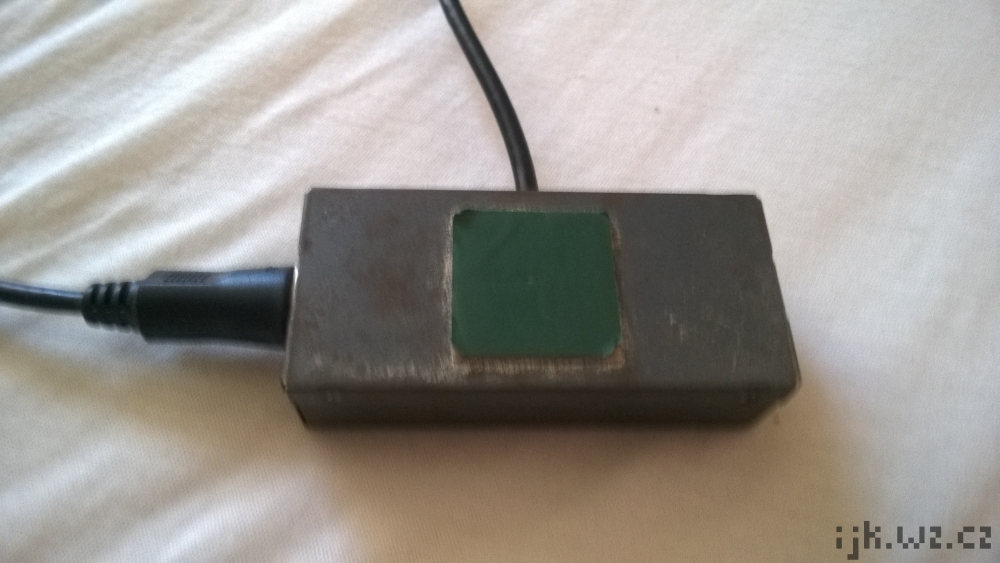
|
When it comes to cartridges, all of them are bootleg. Even though the shape of some of them might look very similar to a genuine Famicom cartridge, the giveaway is the fact that most of them are multicarts. 120 in 1, 300 in 1, and so on. The Chessmaster was never released in Japan, while the yellow cartridges in the last set have an unusual shape. The green cartridge is the first one I got as a kid. |

|
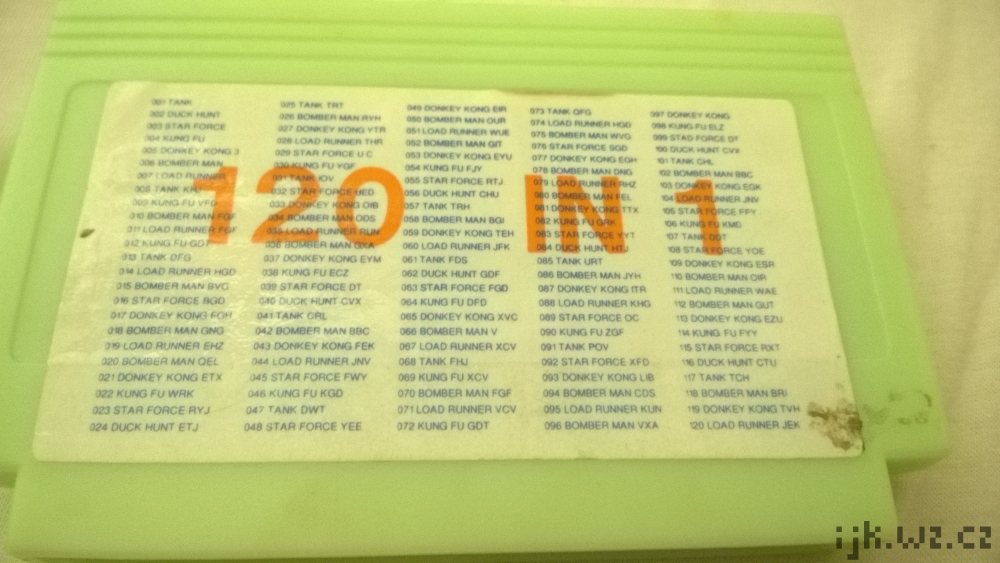
|
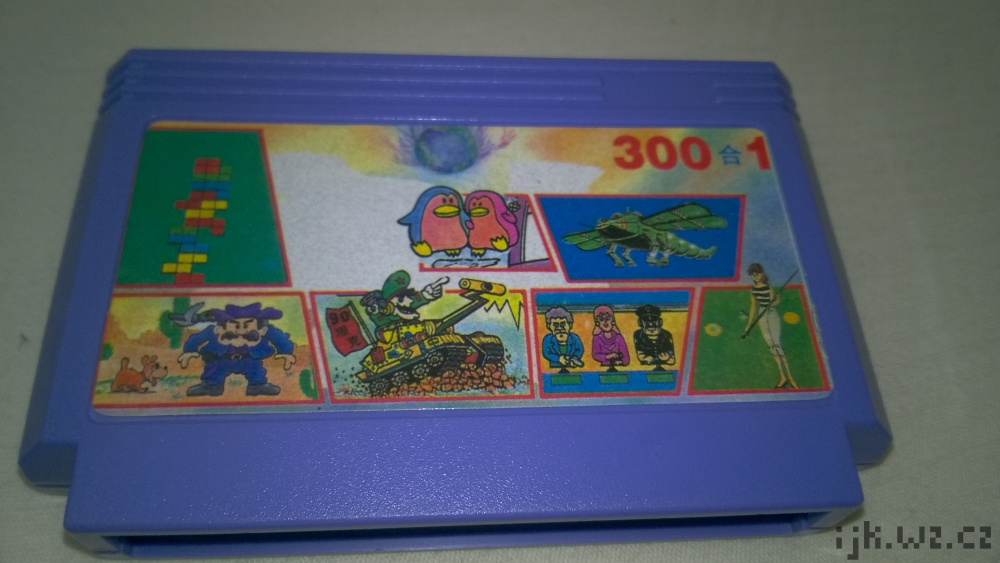
|
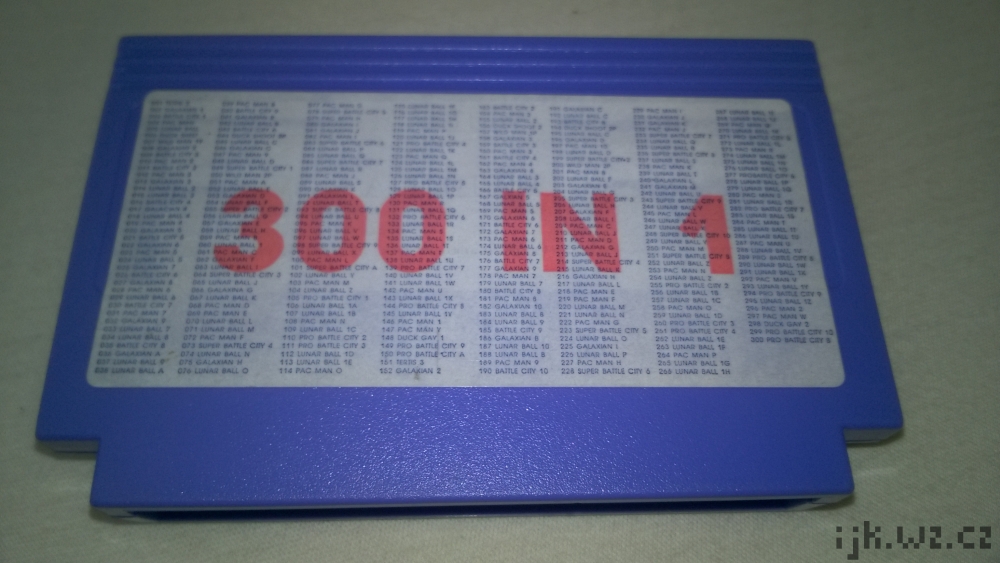
|
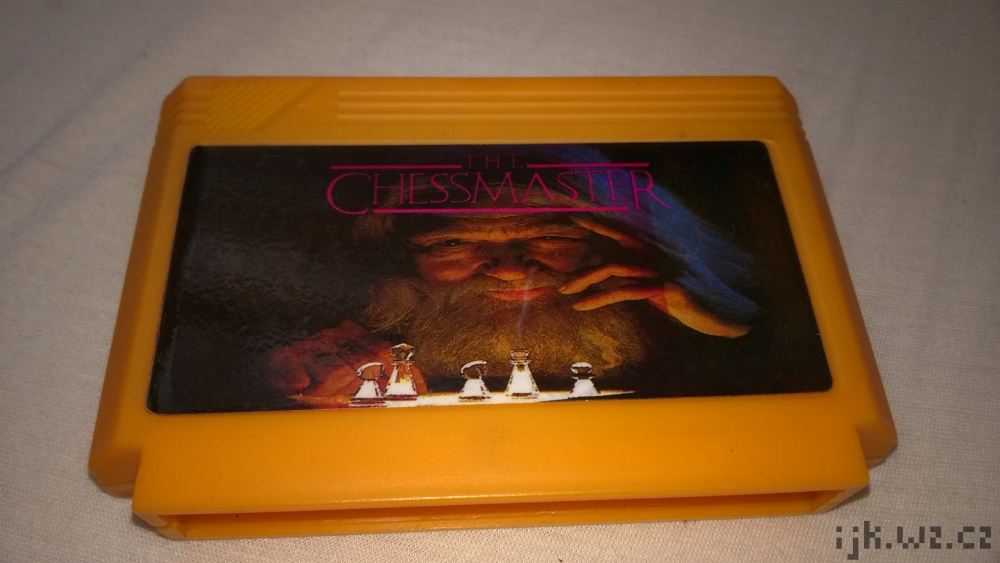
|
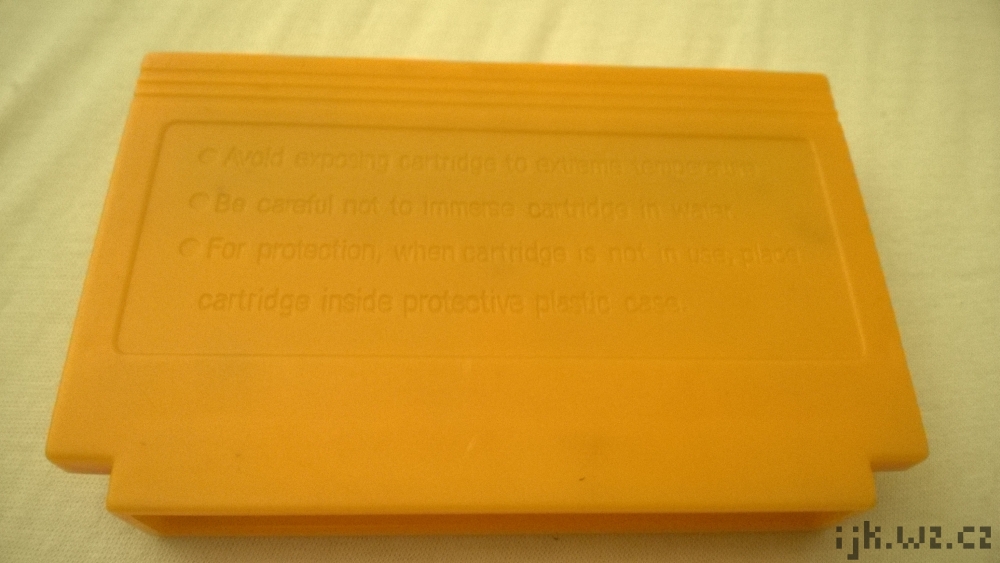
|
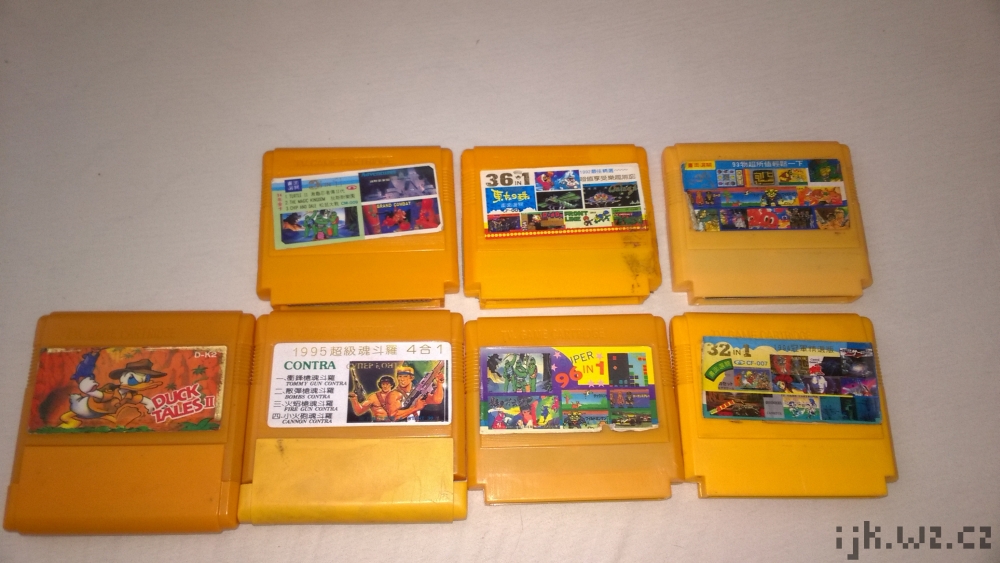
|
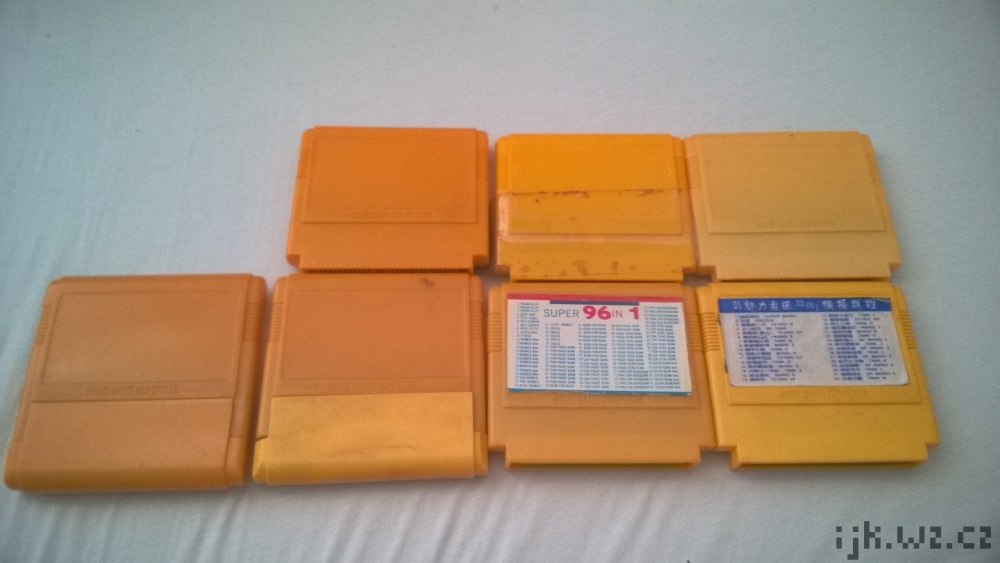
|
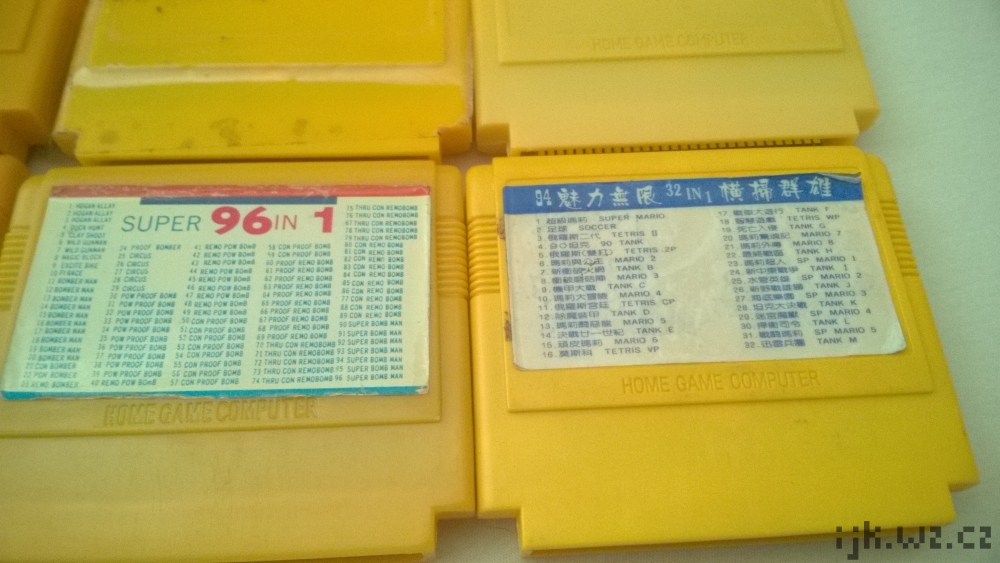
|
In the future I might update this page with some footage of gameplay on the console. Maybe even compare the pirated games to the originals on the NES Classic, once it is released. As for now, let me know how you like this overview. Leave a comment bellow or contact me with one of the methods listed on the main page if you have any questions, suggestions, feedback or anything else. |